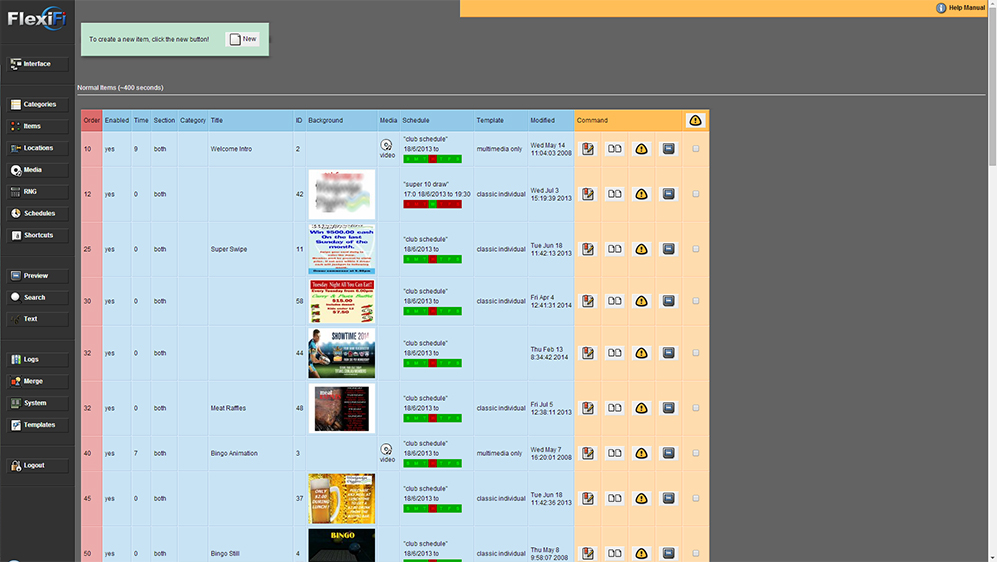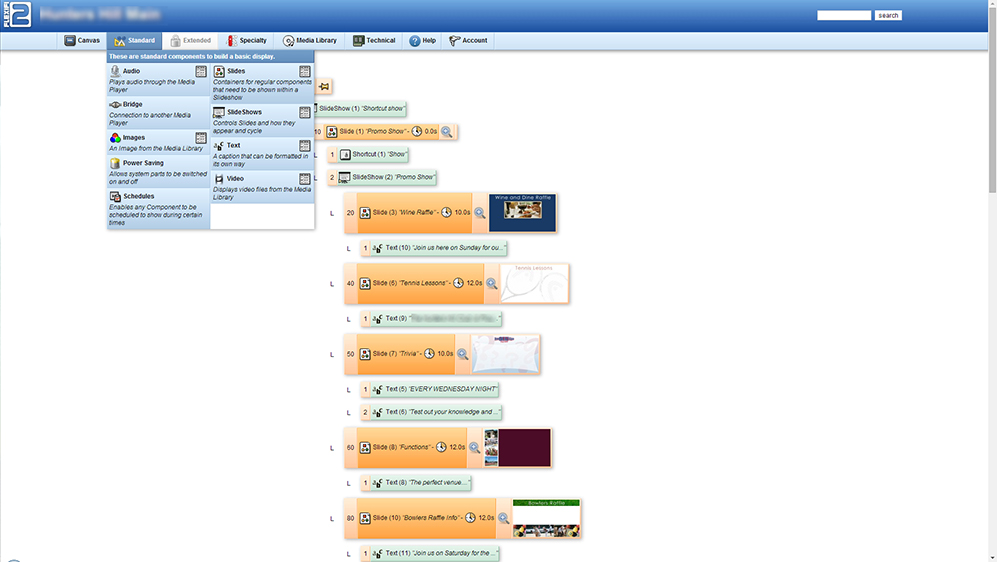I was brought in to this business while it was struggling to stay afloat. It was mid-size with a number of teams (graphics/marketing, sales, accounting, IT), in the market with PMF and paying customers. So why was I brought in? There were issues internally around structure & communication between teams – specifically I was to be part of the IT department to help with communication with the graphics team due to my graphics & technical background.
Early on a few issues were apparent within the business, I believe the company could see it had a problem and was trying anything to save a sinking ship. True to Conway’s law the product reflected it – and therefore the customers could see something was up. Let’s break it down in to benefits and concerns:
| Beneficial | Concerning |
|---|---|
| Brand recognition in the industry | Difficulty sourcing hardware / obsolescence / no future plan |
| Large number of existing customers with decent cash forecast | Top heavy / everyone’s a manager |
| Established teams with good structure | Business months from insolvency |
| Sales team covering a large footprint | Communication issue between departments (resulting in my appointment) |
| Escalating Onboarding / Support / Maintenance costs | |
| Increasing staff losses / turnover |
The two highlighted concerns were the ones that stood out to me straight away, and were clearly the cause & effect for the other concerns. Solve those, and the business could live and thrive.
Early Stage
During this time it was immediately clear the product itself was failing despite the other teams efforts. The original software product was off the shelf (Scala), built on aging hardware (Amiga) that was no-longer able to be sourced, with a haphazard replacement (written in PERL) rapidly put in place using common PC hardware. I could see this replacement, along with the culture within the IT department, and the increasing maintenance would end the company, so I set about architecting the replacement solution to solve this.
Partnership / Growth Stage
Unfortunately the business only lasted a few months before it went under, however the assets were purchased by a company in Sydney who dealt with electronic wireless pagers/buzzers in retail and hospitality – who wanted a digital signage arm to become a more complete solution to customers. You would be familiar with this company if you have ever been handed a buzzer while waiting for your meal order, or prescription at a chemist. A skeleton staff was re-hired, with myself as the entire IT team.
The existing product issues were still there though, so the solution was to develop a new product with the following attributes:
- Ability to be created, administrated, and maintained for minimal costs & minimal staff
- Base the hardware off of common components and architectures, that can be consistently sourced
- Use proven languages, services, operating systems so that replacement IT staff can be easily and rapidly installed
- Streamline the onboarding process to drastically reduce the timeframe from close of sale to operational
Out of this, the FlexiFi suite of products were born, on a robust and common Linux OS, built into a system image, with a web system built on common technologies like PHP and BASH scripts. This enabled rapid onboarding, and cheap replaceable hardware that could support lease agreements. The customer base ballooned to 150+ sites along the eastern coast of Australia with these systems running real-time raffle and bingo draws, displaying daily news headlines, weather, menus with dynamic pricing, and scheduled advertising and announcements.
This turnaround was achieveable within 6 months, with very minimal staff (~one member in each department), and the company was successful and profitable again. The tech bench was even expanded to have 4 systems imaging at one time to cover the demand – keeping in mind a system could go from 0 to packed for shipping in the span of an hour.
We also achieved sales in wildly different implementations such as real estate windows, and wayfinders for multi-storey buildings in the Sydney city.
This spawned the creation of a second version – FlexiFi2. Bringing with it much cheaper hardware as we could now push 4 displays from a single system, we could combine those displays to act as one (for videowalls, large menus), it was now a tree-based system rather than template, so you could have multiple sub-slideshows within slideshows. It was extremely rapid to create what the customer wanted, and more importantly train the customer as it used very common repetitive actions.

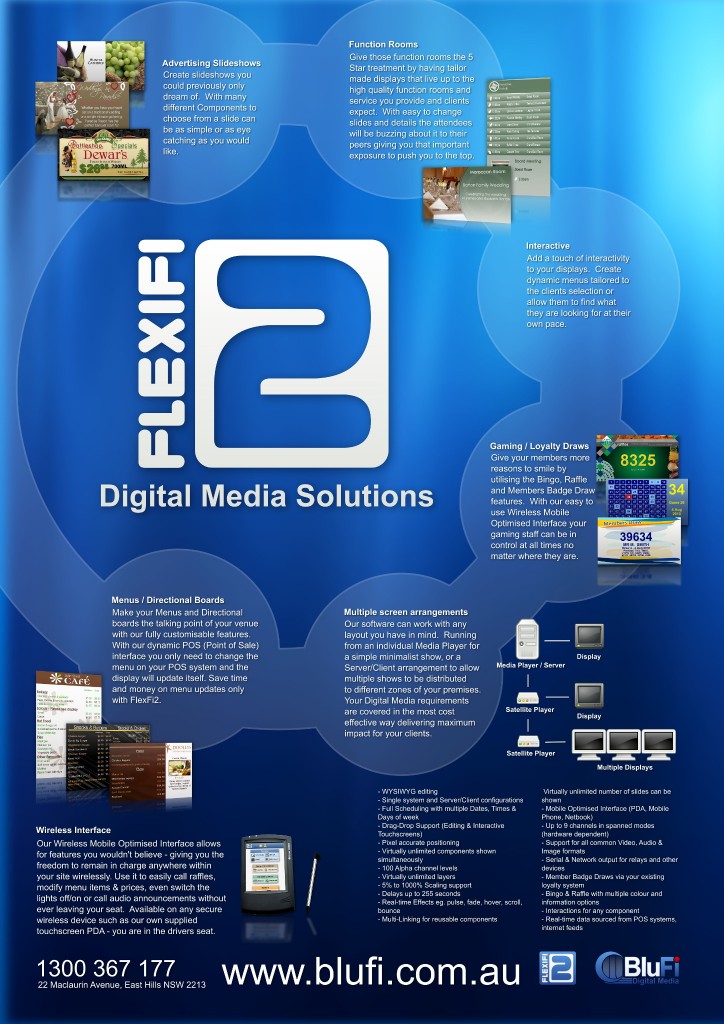

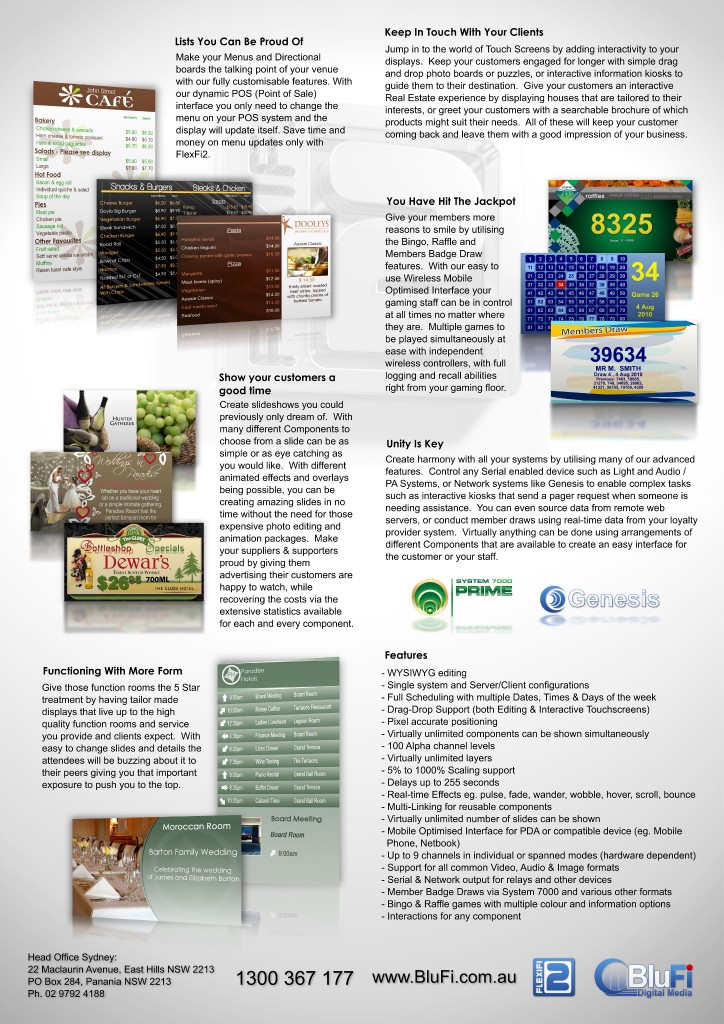
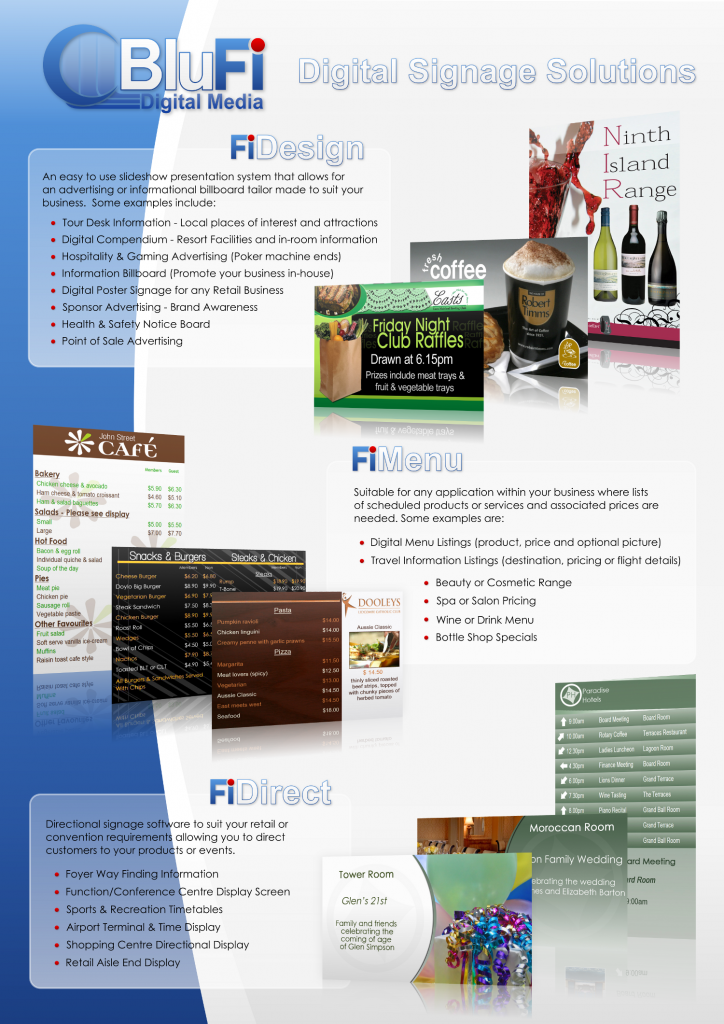
This was the most advanced platform at the time, however an overruling decision from above was to run it on a windows desktop base instead of Linux due to familiarity within that branch (“anyone can support it!”). It was no-longer a “set-and-forget” appliance, this brought with it a number of issues:
- Microsoft licensing, and how it works within enterprise environments meant we no-longer had simple imaging capability – the cost to deploy a customer system went up dramatically.
- There was no-longer system consistency – if a cable gets unplugged or a system restarts, drivers change things. It required remoting in to solve it. And business IT departments don’t like that so support costs and time increased drastically.
- IT departments sometimes wanted to deploy on their own internal image, so highly custom installs were required.
- Windows doesn’t like to run for a long time, you have to make so many tweaks, registry fixes, patches to try and hide it – and it never works 100% of the time. You all would have seen some sort of windows element on arrival/departure boards in airports, or advertising screens in shopping centres, or even the digital menu at your favourite takeaway. Some ATMs even show windows error screens.
- Windows updates. You can try to disable them, but IT departments get angry.
- The system clock – don’t forget this bundle of hassles.
So even with the industry leading software, and installed through to most of the existing sites in addition to others, it was failing due to the extreme support overheads.
Transfer Stage & Downfall
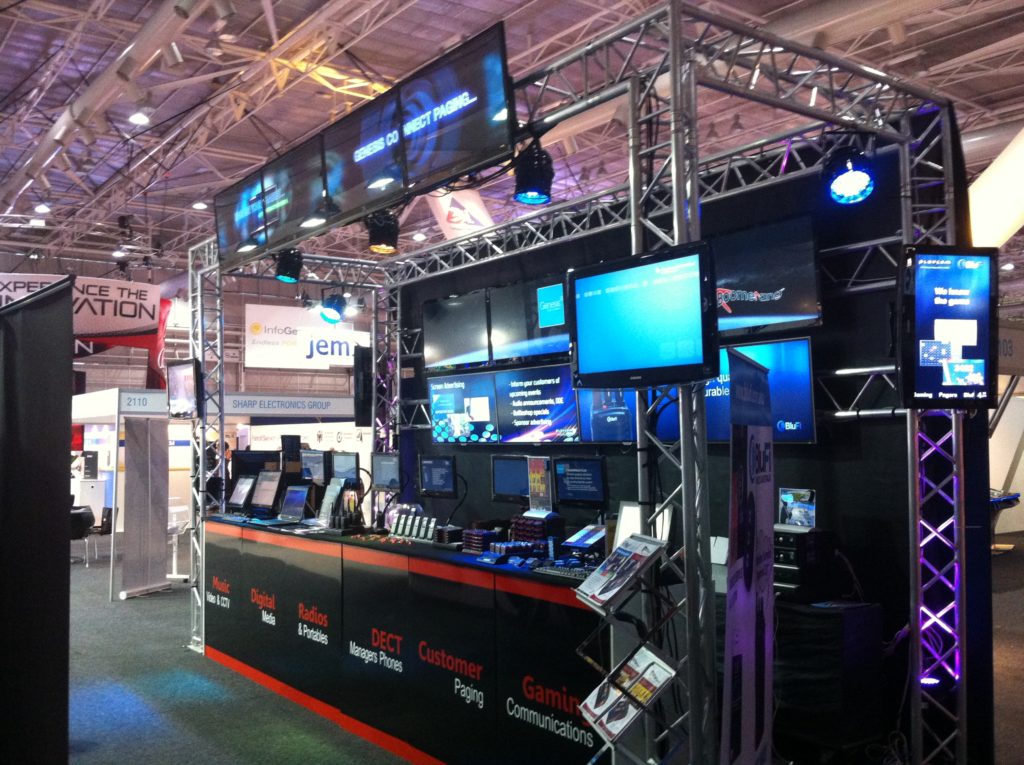
Due to the support headaches the company was going downhill, so the digital media branch was sold off to a company which provided music licencing to stores – a very top-heavy management filled company.
In the digital signage industry there’s a cycle that happens every 3 or so years, where customers look to replace their systems with whatever is new. It’s important to get ahead of this cycle to have what the customers are looking for. So I proposed a solution using all the best bits we had seen success with, with very minimal overheads, and remove the concerning aspects as much as possible. The company declined saying it would cost too much. They then went and licensed a system from New Zealand called OneLan – Linux based, very simple slideshow player. Not at all matching the current customer base requirements. The reason they went with it was because the answer to any challenge was “onelan can do it” – this was due to the system supporting a raw html component, so you could get your software engineer to code what the customer wanted in that slide. Not a cost-effective or sustainable solution.
The company managed to secure some contracts, but never made a profit and didn’t last long after that.
Retrospective
Not content with leaving all those customers in the lurch with no replacement system, I developed a new solution based on the evidence of what worked and what didn’t. It looked like this:
- Object / drag and drop based editor, WYSIWYG as much as possible.
- Assets library, shared amongst multiple companies to reduce duplication.
- Cloud based central editor, rather than an instance on every client system.
- A “pull” transfer strategy from internally in each business, so that no on-site IT firewall/NAT trickery is required.
- Linux base, on common cost-effective reliable name-brand hardware.
- Use common file formats, resolutions, connectors.
- All elements were interactive/triggerable.
Out of this, the Signchro company was born with a few very unique technologies:
- Every system was connected by time. This meant you could have unlimited size video walls, announcements triggered all at the same time globally, you could have interactive elements trigger systems on entirely different continents. All without each system knowing the other exists, and without any special IT networking or firewall trickery. And no special hardware required – all off the shelf.
- Zero configuration self-healing software – the software was modular and knew what it needed to retrieve based on the ‘show’ it was loading. It checked all files and fixed itself if any issues were discovered – a true plug-and-play appliance, and the local storage of assets meant it could work offline.
- Channel based like a set-top box. Unlimited channels, as easy to use as a tv. Change channels, draw raffles, host bingo draws whenever you want with a simple mobile app, with no special IT trickery again.
- Extremely cheap to create and maintain. From memory the cost to the business for each system for all hardware and time required over 3 years was $750AUD.
This was a groundbreaking system at the time, and gained traction at a few large sites throughout Australia.
